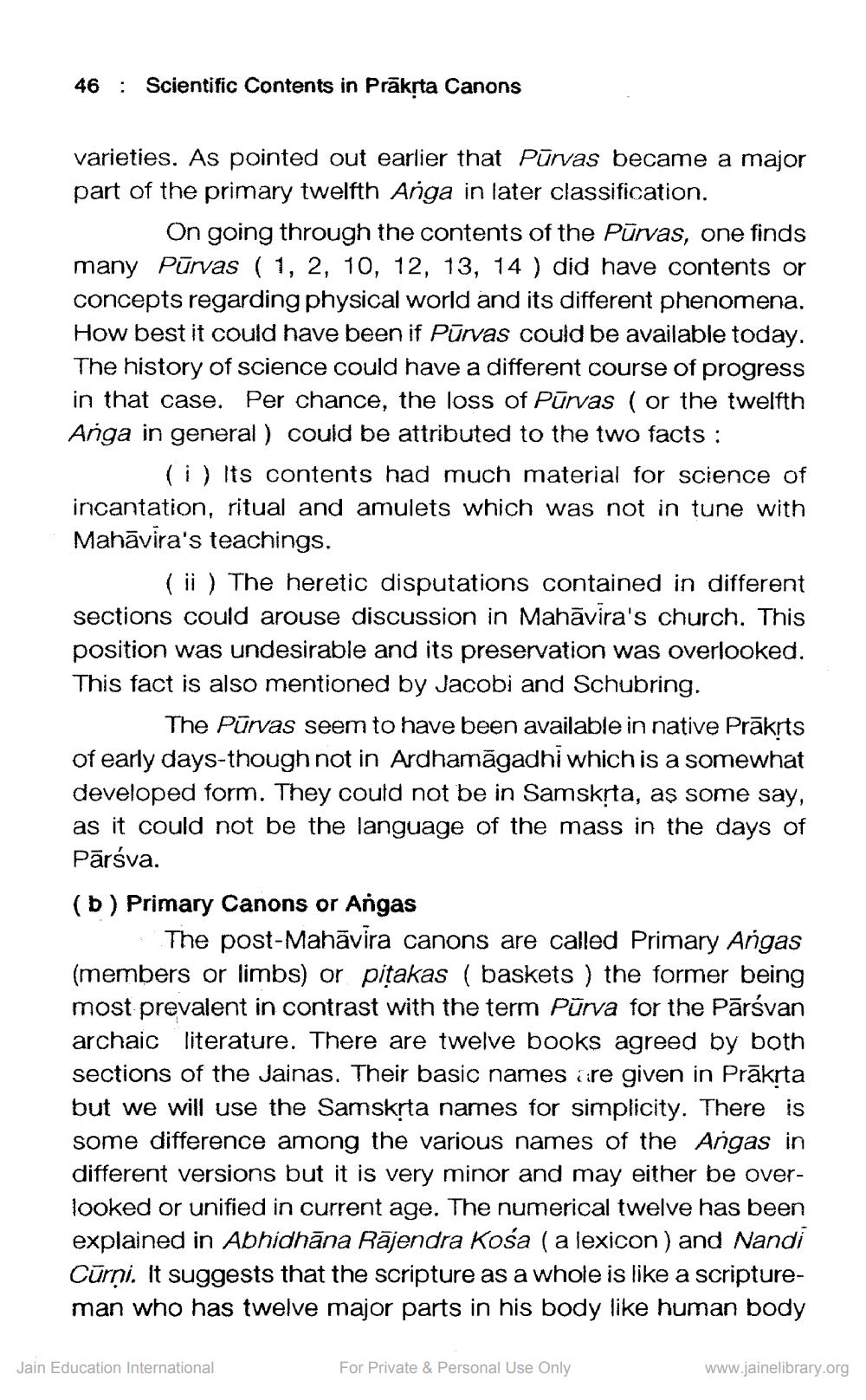________________
46 4: Scientific Contents in Prākṛta Canons
varieties. As pointed out earlier that Pūrvas became a major part of the primary twelfth Anga in later classification.
On going through the contents of the Purvas, one finds many Pūrvas ( 1, 2, 10, 12, 13, 14) did have contents or concepts regarding physical world and its different phenomena. How best it could have been if Purvas could be available today. The history of science could have a different course of progress in that case. Per chance, the loss of Purvas (or the twelfth Anga in general) could be attributed to the two facts:
(i) Its contents had much material for science of incantation, ritual and amulets which was not in tune with Mahāvira's teachings.
(ii) The heretic disputations contained in different sections could arouse discussion in Mahavira's church. This position was undesirable and its preservation was overlooked. This fact is also mentioned by Jacobi and Schubring.
The Purvas seem to have been available in native Prākṛts of early days-though not in Ardhamāgadhi which is a somewhat developed form. They could not be in Samskṛta, as some say, as it could not be the language of the mass in the days of Pārśva.
(b) Primary Canons or Angas
The post-Mahavira canons are called Primary Angas (members or limbs) or pitakas (baskets) the former being most prevalent in contrast with the term Purva for the Pārsvan archaic literature. There are twelve books agreed by both sections of the Jainas. Their basic names are given in Prākṛta but we will use the Samskṛta names for simplicity. There is some difference among the various names of the Angas in different versions but it is very minor and may either be overlooked or unified in current age. The numerical twelve has been explained in Abhidhāna Rajendra Kosa (a lexicon) and Nandi Curni. It suggests that the scripture as a whole is like a scriptureman who has twelve major parts in his body like human body
Jain Education International
For Private & Personal Use Only
www.jainelibrary.org




